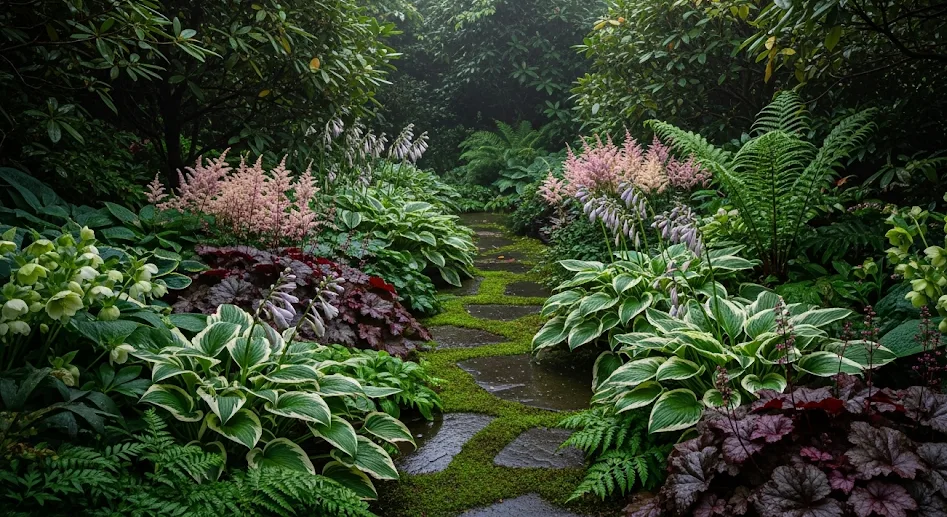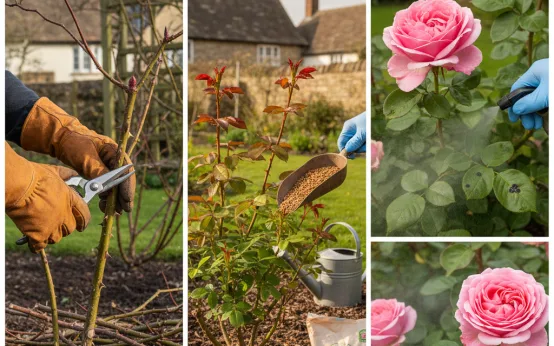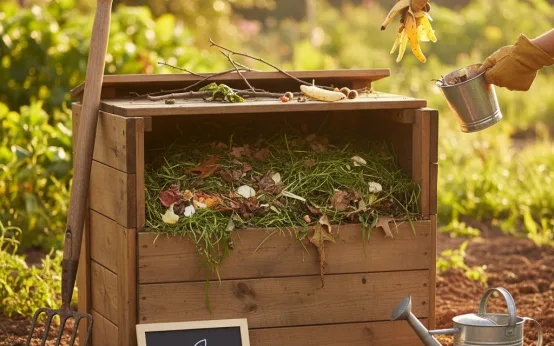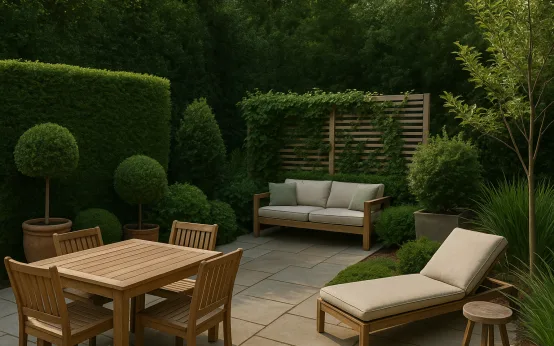
Not every garden is bathed in sunshine all day long. In the UK especially, tall trees, fences, or neighbouring buildings often cast long shadows, and the country’s famously overcast skies add to the challenge. Many gardeners see shaded areas as wasted space, struggling to keep sun-loving flowers alive in less-than-ideal conditions. Yet shade does not need to be a limitation. In fact, it can be an opportunity to create a lush, atmospheric retreat filled with greenery, texture, and seasonal colour. Designing a garden for shade opens up new planting possibilities and ensures that every corner of your outdoor space feels considered and welcoming.
Why Shade Gardens Work
Shaded areas have several advantages often overlooked. Because the soil in these spots tends to retain more moisture, plants are less likely to dry out during the warmer months. This can significantly reduce the amount of watering needed, saving both time and resources. Shade also provides cooler microclimates, which not only benefit people seeking relief on hot summer days but also attract wildlife such as frogs, hedgehogs, and insects that prefer damp, sheltered spaces.
From a design perspective, shade gardens bring balance. While bright borders filled with roses, lavender, and daisies capture attention in the sun, shaded corners introduce calmness and contrast. They create moments of quiet in the landscape, ideal for seating areas, pathways, or simply a place to pause and enjoy a change of pace. Rather than battling with unsuitable species, embracing plants that thrive in shade ensures long-lasting success and adds diversity to the garden as a whole.
Best Plants for Shady UK Gardens
The UK climate supports a wide variety of plants that do well in low light, and many of them are surprisingly resilient. Choosing the right species is key to making a shaded space both beautiful and practical. Among the most reliable are:
- Hostas: Known for their broad leaves in shades ranging from deep green to silver-blue, often patterned with striking variegation.
- Ferns: Perfect for damp, shaded soil, offering delicate, feathery foliage that brings texture.
- Heucheras: Valued for their colourful leaves, available in tones of lime green, copper, and burgundy.
- Foxgloves: Tall spires of pink, purple, or white flowers that brighten shady borders and attract bees.
- Astilbes: Produce plumes of soft flowers in pinks, reds, and whites, standing out in darker corners.
These plants not only survive but flourish without direct sun. Hostas, for example, return year after year, creating reliable structure. Ferns provide movement, swaying lightly in the breeze, while heucheras break up monotony with their vibrant foliage. Planting foxgloves or astilbes ensures vertical interest and seasonal bursts of colour, preventing shaded gardens from appearing flat. By combining them thoughtfully, you can create layers of texture and a palette that feels rich and balanced.
Designing for Impact in the Shade
A shade garden is at its best when designed with variety in mind. Large-leaved hostas act as bold anchors, while ferns introduce fine textures, and heucheras add colour at ground level. Pairing light flowers such as white foxgloves with dark foliage makes shaded spots glow, especially at dawn or dusk when sunlight is limited. Astilbes can be grouped to form bright patches that almost shimmer in low light.
The hard landscaping of a shade garden also matters. Light-coloured gravel or paving reflects what little sunlight there is, enhancing brightness. Mirrors on fences or walls multiply greenery and give the illusion of space. Raised beds are particularly useful in shaded gardens, improving drainage in damp soil and making planting easier to manage. For small urban gardens, using vertical structures such as trellises or wall planters allows greenery to climb upwards, maximising space while softening boundaries.
Another design trick is to use shade to your advantage. Seating areas nestled in cool corners become natural retreats during hot days. Adding a water feature, even something as simple as a small bowl fountain, enhances the atmosphere with sound and movement. These elements together transform what might once have been a dull patch into the most inviting area of the garden.
A Garden Full of Hidden Beauty
Shade gardens may not dazzle with constant sunlight, but they offer subtle charm that sunny borders cannot always match. They excel in textures, layers, and seasonal surprises. In spring, foxgloves rise elegantly above ferns, while in summer, the broad leaves of hostas provide structure and calm. By autumn, heucheras shift tones, adding warmth, and even in winter, many ferns and evergreen ground covers keep the garden alive.
The presence of wildlife is another reward. Frogs shelter under damp foliage, bees visit astilbes, and birds explore the dense cover. These small interactions bring energy to spaces that once felt neglected. The shaded garden becomes not just a design solution but a sanctuary, both for wildlife and for people seeking quiet.
Ultimately, dark corners should not be seen as a problem but as an opportunity. With the right plants and thoughtful design, they become highlights, balancing brightness elsewhere and adding depth to the whole garden. A successful shade garden is proof that beauty can flourish in every condition, and that sometimes, the most overlooked areas hold the greatest potential.

 Rose Garden Care: Pruning, Fertilizing, and Disease Prevention
Rose Garden Care: Pruning, Fertilizing, and Disease Prevention  How to Start Composting: A Beginner’s Guide
How to Start Composting: A Beginner’s Guide  Creating Outdoor Room Divisions with Plants
Creating Outdoor Room Divisions with Plants